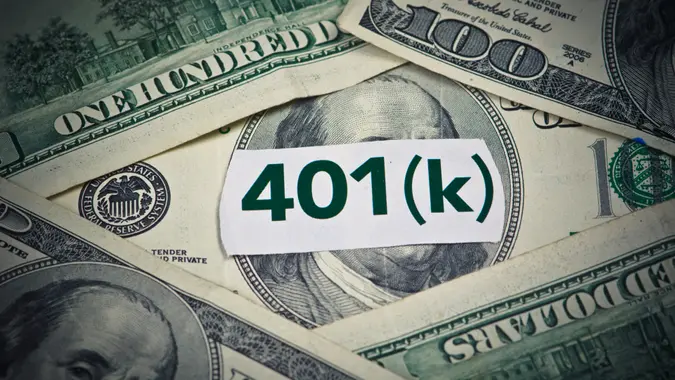If Wealth Was Distributed Equally Across the US, How Long Would the Money Last New Retirees?

Commitment to Our Readers
GOBankingRates' editorial team is committed to bringing you unbiased reviews and information. We use data-driven methodologies to evaluate financial products and services - our reviews and ratings are not influenced by advertisers. You can read more about our editorial guidelines and our products and services review methodology.

20 Years
Helping You Live Richer

Reviewed
by Experts

Trusted by
Millions of Readers
Recent retirees are all building a new life outside the workforce. However, they’re not embarking on this new adventure with equal financial footing.
Some people have a large nest egg saved for retirement, while others have little or no retirement savings. Obviously, this creates very different standards of living among new retirees.
But what if wealth, and namely retirement savings, across the U.S. was suddenly spread out equally? Keep reading to find out how long the money would last for new retirees in three different savings situations.
The Hypothetical
Imagine something truly incredibly happened, and wealth was suddenly distributed evenly across the U.S. Specifically, the country’s $160.35 trillion fortune was divided equally between the population of approximately 340.11 million people. In this case, each American would receive around $471,465. Given the timing, recent retirees would be getting their financial windfall — or financial loss — at the beginning of their golden years.
For some people, this would add to retirement savings they already had. Others without any savings would suddenly have a solid nest egg to fall back on.
Undoubtedly, this newfound cash would be a game-changer, but it wouldn’t last forever. Even combined with the estimated average Social Security monthly benefit of $1,976 for those who retired in 2025, it would still run out eventually.
As of 2023 — the most recent data available from the U.S. Bureau of Labor Statistics — the average retired household had annual expenditures of $57,866, according to the Bureau of Labor Statistics. This works out to average monthly expenses of $4,822.
No Retirement Savings
A new retiree with no retirement savings would quite literally hit the jackpot with this situation. After applying their Social Security benefits to monthly expenses, they would need to take $2,846 per month out of their newfound $471,465 lump sum.
At this rate, they would need to use $34,152 of their newfound wealth per year. This means the money would last for roughly 13.8 years.
$500,000 in Retirement Savings
A new retiree with $500,000 in savings would nearly double their net worth to $971,465 with a wealth distribution payout. As with the person above who had no savings, they would need to use $34,152 of their money per year for living expenses after applying monthly Social Security benefits.
This is where the similarities between the two end. Since this person already started with a nest egg, their total retirement fund would last 28.4 years.
$1 Million in Retirement Savings
Entering retirement with $1 million in savings is great, but $1.47 million is even better. Aligned with retirees in the above categories, this person would be spending $34,152 of their own money for living expenses after factoring in their monthly Social Security check.
Of course, their money is going to last a lot longer. Specifically, they wouldn’t run out of cash for 43.1 years.
Editors note: All data was collected under the hypothetical assumption each person lives alone. Data also does not account for inflation or earned interest.
More From GOBankingRates
 Written by
Written by  Edited by
Edited by 

























